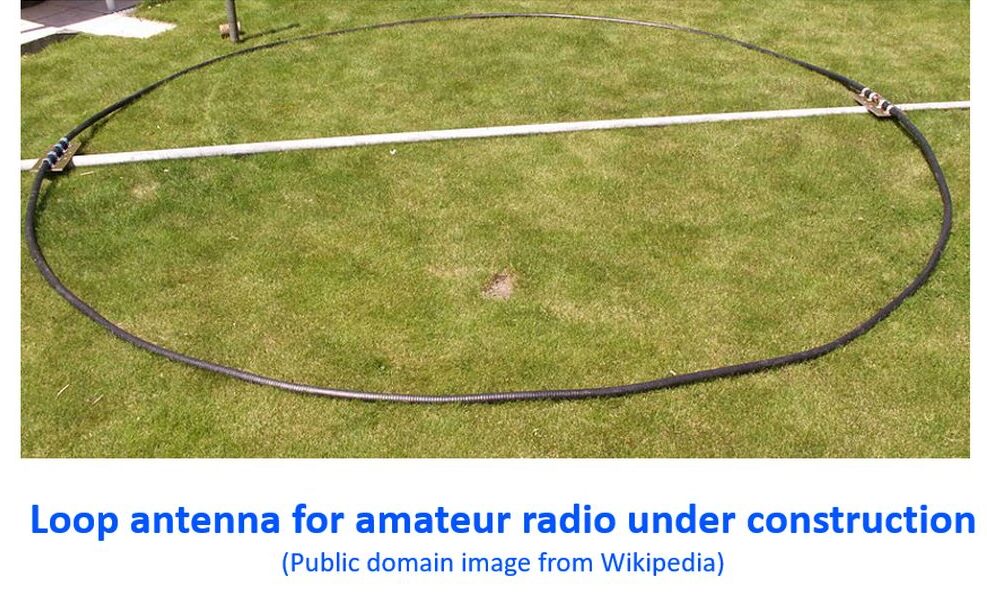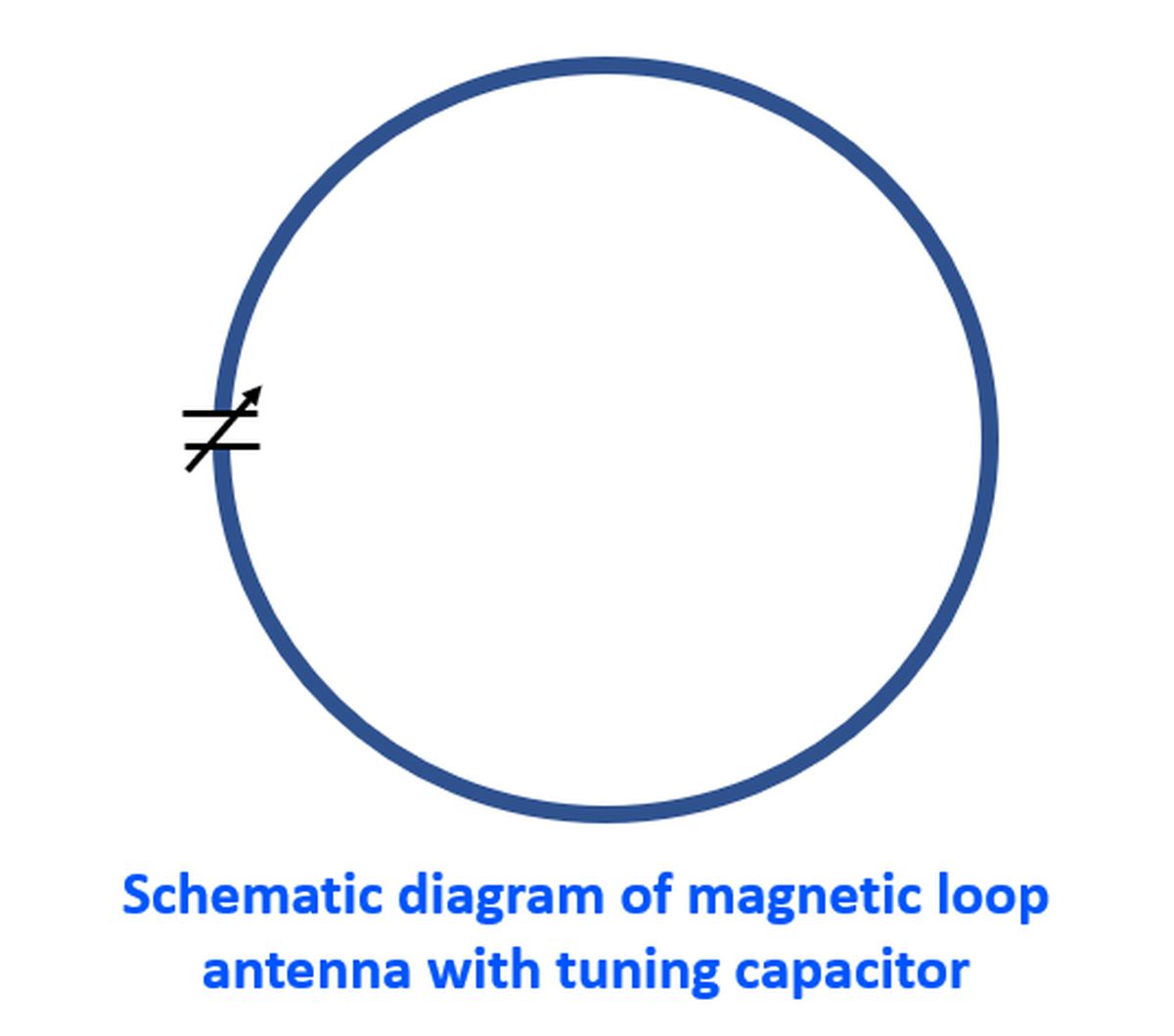Small Magnetic Loop Antenna
Small Magnetic Loop Antenna
Small magnetic loop antennas can be used both indoors and outdoors. They are cheap, easy to build antennas which have been used for even DX contacts with an indoor antenna running 50 watts for CW, PSK, JT65 and FT8 modes on 10 to 40 meters according to K5IJB! Wide spaced variable tuning capacitors which prevent arcing are needed when planning for higher power. You may be aware that the spacing in question is between rotor to stator elements and not between stator elements and there are formulas for calculation of the minimum spacing required for a given voltage. Small loop antennas are small in comparison to the full wavelength of the transmitting frequency. But they are much larger than the small receive only loop antennas which you may have seen supplied along with broadcast receiving sets.

In its simplest form a magnetic loop antenna is a loop of wire with an RF current flowing through it. RF magnetic field generated by the current gives electromagnetic radiation, just like a dipole antenna. Analogous to the electrically shortened dipoles, the inductive reactance of the loop can be tuned out using a capacitor placed across the gap in the loop. The magnetic loop antenna has a reception null on the broad side. At least some of you would have noted this type of null in case of small AM broadcast receivers with ferrite rod antenna. When the end of the ferrite rod coil is pointed towards the radio station, the signal drops. This principle may be useful in finding the direction of transmission as well, may be in a fox hunt! When the magnetic loop antenna is used indoors, the magnetic loop is placed at least 5 feet away with null side facing the operator.

While a vertical dipole gives vertically polarized radiation all around, horizontal dipole gives horizontally polarized radiation. But it is difficult to implement a vertical dipole for lower bands like 80m which will have to be more than 40m high. Horizontal dipole on the other hand, has a null for signals on the ends. A magnetic loop antenna placed horizontally has no such null in the horizontal direction and gives horizontally polarized radiation. Yet most implementations of magnetic loops are in a vertical position, for convenience of mounting.
Magnetic loop antennas can be made in various shapes like circular, octagonal, hexagonal, square or triangular. An online calculator for an octagonal small transmitting loop antenna using conductors in the form of pipes is available at: https://www.66pacific.com/calculators/small-transmitting-loop-antenna-calculator.aspx. When the circumference of the loop, diameter of the conductor, operating frequency and transmitting power are submitted, the values for antenna efficiency, bandwidth, tuning capacitance, capacitor voltage and a whole lot of other useful information are displayed. They also mention that for highest efficiency, the conductor length for a small transmitting loop antenna should be greater than 1/8 wavelength. The conductor length should be less than 1/4 wavelength for avoiding self resonance.
Different methods for impedance matching in case of magnetic loop antennas are capacitive, using additional fixed value capacitors, inductive tap like an auto transformer from the loop, and coupling loop using a smaller loop within the main magnetic loop. Of these coupling loop seems to be the most tried out one. Some have even combined capacitive matching for additional bands in case of coupling loops as well.

Small loop antennas are less sensitive to picking up electrical noise in the near field, typically less than one wavelength. This might be a boom if you have nearby electrical equipment which generate electrical noise, which is quite common in modern living spaces. This could be the reason why they are called magnetic loop antennas. A small magnetic loop antenna responds mostly to the magnetic component of the electromagnetic wave and is fairly insensitive to the electrical field component. So they are able to receive weak signals out of the ambient noise.
K5IJB has given designs of small magnetic loop antennas built of LMR-400 Coax Cable. Variable capacitor is used for tuning and a smaller coupling loop is used for matching. It does not require a counterpoise or grounding. Ferrite beads are inserted on the antenna end of the feeder line to prevent common mode current. A version for fixed operation uses a 9 foot circumference loop on a fixed stand and a portable operation version uses an 8 foot circumference loop with a break-down stand. Fixed operation version covers 10-12-15-17-20-30 and 40 meters. Portable operation version with 30 inch diameter covers 10-12-15-17-20 meters.